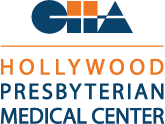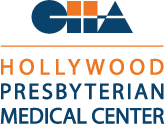|
Glaucoma is the second leading cause of blindness in the world. Estimates are that nearly 2.7 million Americans have glaucoma, with more than half going undiagnosed. There is still no cure for glaucoma. Left untreated, it can cause permanent vision loss. Primary open-angle glaucoma, the most common form, damages the optic nerve through progressive degeneration of retinal ganglion cells (RGCs) and their axons. RCGs help transmit visual information to the brain. The damage can lead to blindness. Early diagnosis and intervention are essential. Our research team is exploring a new way to image the RGC layer, using a highly sophisticated method known as optical coherence tomography angiography (OCTA). This non-invasive imaging technique can visualize blood vessels at the capillary level and produce images within seconds, making it invaluable in gathering vascular data. Using OCTA images, our researchers have been able to quantify blood vessels within the region and gain new knowledge of the functional and structural status of glaucoma. These studies have shown that microcirculation in the macula (oval-shaped pigmented area near the center of the retina at the back of the eye) is significantly reduced in glaucoma patients. Earlier diagnosisEarly detection of changes in the macula's microvasculature could serve as an advanced marker in the diagnosis of primary open-angle glaucoma, improve understanding of the disease and enable treatment at an early stage. Our research found that OCTA provides superior resolution compared with prior methods used to measure ocular blood flow. In the future, OCTA may even prove a useful tool in detecting salvageable RGCs for employment in rescue therapies. In a 2017 study, our researchers reported a case of a patient with congestion in the optic disc, the raised disk on the retina at the point of entry of the optic nerve. Evaluation of the patient's glaucoma by conventional imaging methods was interfered by the congestion. OCTA was used and demonstrated greater ability to detect glaucomatous changes. Promising ToolOCTA promises to be a tool for improving early diagnosis of glaucoma. It will supplement current glaucoma diagnostic tools to aid in the early detection of glaucoma. Diagnostic accuracy of OCTA vessel density measurements from small studies to date support its promise in this role and this surely will be enhanced with ongoing improvements to OCTA hardware and software. Additional research is needed to optimize the imaging protocol before OCTA's potential is fully realized. |
 ENGLISH
ENGLISH  РУССКИЙ
РУССКИЙ 


